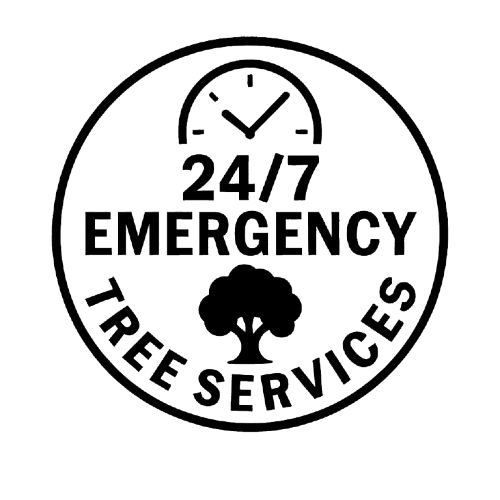Winter Tree Maintenance Tips for NYC Homeowners
Winter tree maintenance is crucial for NYC homeowners, especially when facing harsh weather conditions. With the proper care, trees can withstand freezing temperatures, heavy snow, and icy winds while remaining healthy for years. Trees are integral to urban landscapes, and winter damage can lead to costly repairs or removal. To avoid such problems, it’s essential to take proactive steps in preparing and protecting your trees before winter arrives. Key Takeaways: Early Inspection is Essential: Inspecting your trees in the fall helps identify weak branches, diseases, or pests that must be addressed before winter. This proactive approach minimizes the risk of winter damage. Proper Pruning Prevents Accidents: Pruning trees in the winter, when they are dormant, reduces the risk of falling branches during storms. Removing dead limbs helps maintain tree health and structural balance. Mulching and Watering Protect Roots: Mulching insulates roots from extreme cold and retains moisture, while watering during dry winter spells ensures trees get the hydration they need to survive. Inspecting Trees Before Winter Early Fall Inspection An early fall inspection is a critical first step in preparing your trees for winter. As the seasons transition, trees can show signs of stress or damage that may worsen in the colder months. Before winter arrives, homeowners may prevent accidents or more damage from snow and ice by inspecting their trees for potential hazards such as weak branches, illnesses, or structural difficulties. During the inspection, you can evaluate the general health of your trees to ensure they are robust enough to withstand the winter. By checking in early fall, you have ample time to address any concerns and hire a professional arborist if necessary. The cold weather and snowstorms that hit NYC can strain trees, so identifying issues before the temperature drops is critical to preventing problems later. Signs of Weakness During the inspection, look for several signs that indicate a tree is struggling or may be at risk during the winter: Dead Branches: These are particularly dangerous as they can break off under the weight of snow or ice, potentially causing injury or property damage. Dead branches are often brittle and easy to spot because they no longer produce leaves. Cracks in the Trunk: Large cracks in the tree’s trunk or limbs can weaken its structure, making it vulnerable to breakage during strong winter winds or heavy snowfall. Horizontal cracks are concerning because they may indicate internal damage. Weak or Exposed Roots: Roots that appear damaged, exposed, or lifted from the ground can signal instability. Trees with compromised root systems are likelier to fall during winter storms when the soil freezes or snow accumulates. Addressing Pests Pests and diseases can severely weaken a tree’s health, making it more susceptible to winter stress. Common pests in NYC, such as the emerald ash borer or various fungal infections, can cause long-term damage if left untreated. During your fall inspection, be on the lookout for: Insects or Pest Damage: Visible insects, chewed leaves, and holes in the bark are signs that pests may be affecting your tree. Certain pests, like borers, live inside the tree and may be harder to detect without a professional inspection. Fungal Infections: Discoloration, mushrooms growing at the base, or black spots on leaves or bark indicate the presence of fungal infections. These can spread rapidly and weaken the tree’s defenses, leaving it vulnerable during the winter. Leaf and Bark Damage: Irregular leaf patterns, early leaf shedding, or peeling bark may also be symptoms of disease or stress caused by pests. Treating these issues before winter will help ensure your trees remain strong and resilient through the colder months. Pruning for Safety and Health Winter Pruning Benefits Pruning during winter offers significant advantages because trees are in a dormant state. When a tree is dormant, it’s less susceptible to stress and diseases, often spreading through fresh cuts in the warmer months. Winter pruning allows you to shape the tree without causing harm, as the absence of leaves provides a clear view of the tree’s structure. This makes identifying branches that need to be pruned for the tree’s overall health and safety easier. Dormant pruning also promotes new growth in the spring, leading to a healthier and more resilient tree once the warmer weather arrives. For NYC homeowners, winter pruning reduces the risk of pests and diseases taking hold since most insects and fungi are inactive during the colder months. Removing Dead Limbs Dead limbs are a significant hazard during the winter, especially in areas prone to snowstorms and freezing rain, like NYC. These branches become brittle and can easily snap under the pressure of ice or snow accumulation, potentially causing damage to property or posing safety risks to people nearby. By removing dead or weak branches before winter, homeowners can prevent limbs from breaking and reduce the chance of falling debris. In addition, this pruning improves the tree’s overall health, allowing it to focus energy on maintaining healthy branches and preparing for spring growth. Shaping for Balance Pruning is also about shaping the tree to maintain its structural integrity. An unbalanced tree is more prone to damage in winter storms, as heavy snow or ice can cause uneven pressure on specific branches. By strategically pruning the tree, homeowners can ensure a more balanced structure. This involves removing overlapping branches, thinning crowded areas, and ensuring the tree’s canopy is not too dense. A well-pruned tree is less likely to suffer from storm-related breakage, making it safer and more aesthetically pleasing. Mulching to Protect Roots Applying Mulch in Late Fall Mulching in late fall protects a tree’s roots from the harsh winter cold. As temperatures drop, mulch acts as an insulating layer, keeping the ground temperature stable and protecting roots from freezing. This insulation also helps retain moisture, ensuring the tree’s roots stay hydrated throughout the winter, even when surface water becomes scarce. Applying mulch before the ground freezes creates a barrier that shields roots from drastic temperature fluctuations, which can cause stress to the tree. Additionally, mulching prevents
Emerald Ash Borer, Gypsy Moth, and More: The Pests Destroying NYC’s Trees
NYC’s urban trees are vital for improving air quality, reducing heat, and enhancing the city’s natural beauty. However, these trees face significant threats from invasive pests that can cause widespread damage if not properly managed. Understanding the common pests affecting NYC trees and learning prevention methods is essential for residents and city officials to protect the city’s green spaces. Key Takeaways: Common Pests to Watch For: NYC’s trees are at risk from invasive species like the Emerald Ash Borer, Asian Longhorned Beetle, and Gypsy Moth, which can lead to significant tree loss if not detected early. Importance of Early Detection: Regular inspections and prompt identification of signs like exit holes, dying branches, or woolly masses on tree needles can prevent severe infestations and save trees. Prevention Strategies: Implementing biological controls, applying chemical treatments, and maintaining overall tree health through proper care is crucial to preventing pest damage and preserving NYC’s urban forest. Common Pests in NYC Trees Understanding the common pests that threaten tree health is crucial to effectively protecting NYC’s urban forest. Below is an overview of the city’s most significant pests affecting trees. Emerald Ash Borer (EAB) A tiny, shiny green insect is specific to ash trees and endemic to Asia. Signs of Infestation: D-shaped exit holes: Adult beetles create D-shaped holes (~1/8 inch wide) when exiting the tree. Dying branches: Thinning and dieback starting from the upper canopy. Bark splitting: Vertical splits in the bark reveal S-shaped larval galleries underneath. Impact: The EAB disrupts the tree’s ability to transport water and nutrients, leading to widespread ash tree mortality within 2-4 years of infestation. Asian Longhorned Beetle (ALB) A giant, black beetle with white spots and long, banded antennae. Signs of Infestation: Large round exit holes: Perfectly round holes (~3/8 inch diameter) on the trunk and branches. Sawdust around tree base: Coarse sawdust (frass) accumulated on the ground or in branch crotches. Impact: ALB attacks various hardwoods, including maples and elms, causing structural weakness and potentially killing the tree if not managed promptly. Gypsy Moth (Lymantria dispar) An invasive moth species whose caterpillars feed on the foliage of over 300 tree and shrub species. Signs of Infestation: Egg masses on bark: Tan-colored, fuzzy egg masses attached to trunks and branches. Chewed leaves: Irregular leaf edges or complete defoliation. Impact: Repeated defoliation weakens trees, making them more susceptible to diseases and other pests. It can also lead to tree death after several consecutive years. Southern Pine Beetle (SPB) A tiny, reddish-brown beetle that primarily infests pine trees. Signs of Infestation: Yellowing needles: Needles fade from green to yellow to red before falling off. Pitch tubes: Small, popcorn-like resin masses on the bark where beetles have entered. Serpentine galleries: S-shaped tunnels under the bark created by larvae. Impact: SPB can rapidly kill pine trees and spread through stands, causing significant ecological and economic damage. Hemlock Woolly Adelgid (HWA) A minuscule, aphid-like insect that feeds on hemlock tree sap. Signs of Infestation: White woolly masses: Cotton-like balls at the base of needles on the underside of branches. Thinning canopy: Loss of needles leading to sparse foliage. Impact: Infested hemlocks decline health and can die if untreated within 4-10 years, affecting forest composition and wildlife habitat. Summary of Common Pests Pest Description Signs of Infestation Impact Emerald Ash Borer (EAB) Metallic green beetle targeting ash trees D-shaped exit holes Dying branches Bark splitting Widespread ash tree mortality Asian Longhorned Beetle (ALB) Black and white beetle with long antennae Large round exit holes Sawdust around tree base Damage to hardwoods like maples and elms Gypsy Moth (Lymantria dispar) Invasive moth with defoliating caterpillars Egg masses on bark Chewed leaves Weakening and potential death of trees Southern Pine Beetle (SPB) Small brown beetle attacking pines Yellowing needles Pitch tubes Serpentine galleries under bark Devastation of pine populations Hemlock Woolly Adelgid (HWA) Aphid-like insect on hemlocks White woolly masses at needle bases Thinning canopy Decline and death of hemlock trees Impact of Pests on NYC Trees Invasive pests pose a significant threat to the health and longevity of New York City’s urban forest. Their impact extends beyond individual trees, affecting the city’s environment, economy, and cultural landscape. Environmental Damage Loss of Tree Canopy: The widespread destruction of trees leads to a reduced tree canopy, diminishing the city’s natural ability to filter air pollutants and produce oxygen. This loss adversely affects urban air quality and contributes to higher concentrations of harmful contaminants. Urban Heat Island Effect: Trees are crucial in moderating city temperatures by providing shade and releasing moisture into the air through transpiration. A diminished tree canopy exacerbates the urban heat island effect, leading to higher temperatures, increased energy consumption for cooling, and more significant strain on power grids. Ecosystem Disruption: Trees provide habitat and food sources for various wildlife species. The decline in tree populations disrupts local ecosystems, reducing biodiversity and potentially losing native species. Economic Costs Increased Municipal Spending: The city faces elevated costs associated with removing dead or infested trees to prevent the spread of pests. These include expenses for labor, equipment, and safe disposal methods. Tree Replacement and Maintenance: Replacing lost trees requires significant investment in purchasing new saplings, planting them, and providing ongoing care to ensure their survival. This places additional financial burdens on city budgets and community organizations. Impact on Property Values: Healthy, mature trees enhance property aesthetics and can increase real estate values. Losing trees may decrease property values and make neighborhoods less attractive to potential residents and businesses. Aesthetic and Cultural Impacts Loss of Iconic Trees and Landscapes: Many of NYC’s trees are historic and contribute to the unique character of neighborhoods and parks. The death of these trees alters familiar landscapes, affecting community identity and heritage. Reduced Quality of Life: Trees provide shade, beauty, and a sense of tranquility in the bustling urban environment. Their absence can diminish recreational spaces and negatively impact residents’ mental and emotional well-being. Cultural Heritage Loss: Some trees are integral to local traditions and histories. Their loss can sever connections




